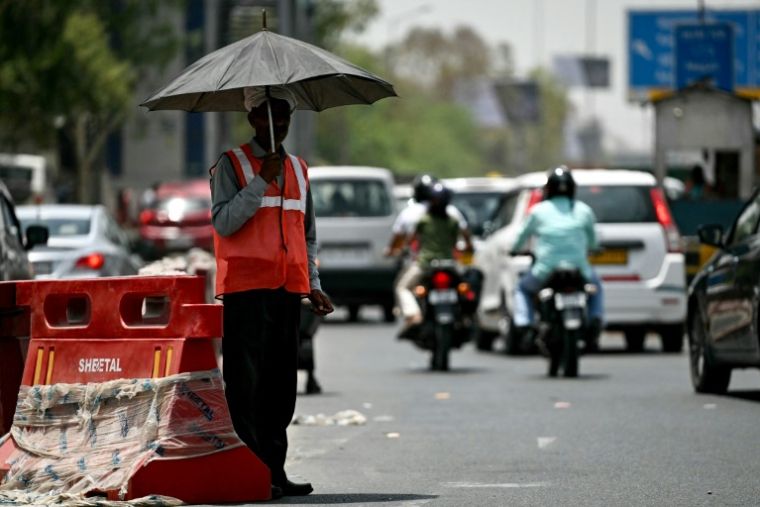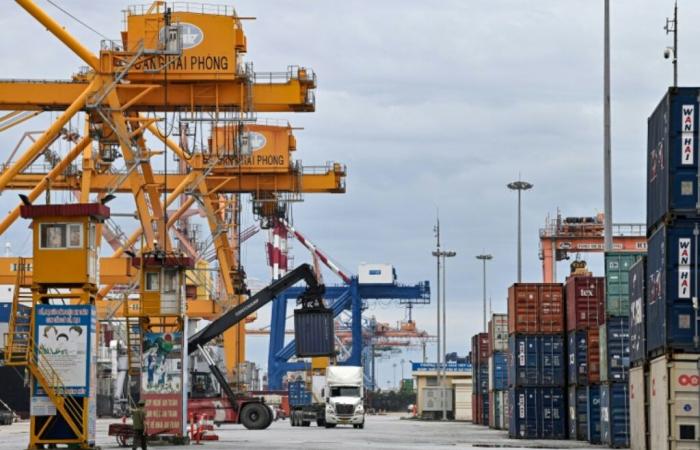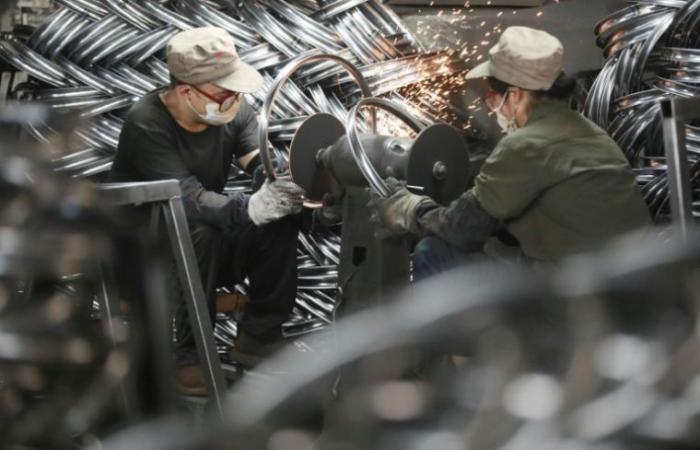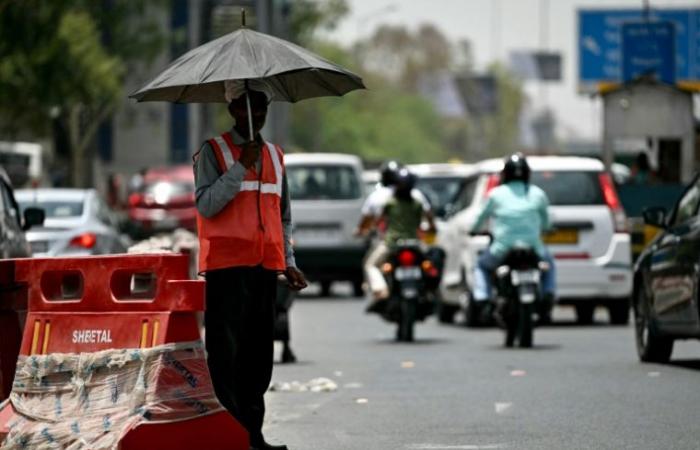A container port in Haiphong, Vietnam's main port, August 29, 2023 (AFP / Nhac NGUYEN)
Asia remains “the main engine” of the world economy, but its horizon is darkening, between worsening Sino-American trade tensions, fragile Chinese economic situation and rising climate risks, warns Thomas Helbling in an interview with AFP , deputy director of the IMF for the region.
If the continent brings together countries with varied situations, Asia as a whole will contribute no less than 60% to the world's economic growth this year, recalls the International Monetary Fund (IMF) in a report published Friday.
Well above the global average (3.2%), Asian GDP is expected to grow by 4.6% in 2024, according to the Fund's revised forecasts, with expected growth of 5.3% for emerging Asian economies and developing, driven by India (+7%), Vietnam (+6.1%) and Indonesia (+5%).
However, risks abound: geopolitical threats, persistent real estate crisis in China, weakening global demand, and financial market turbulence. Above all, Asia remains suspended from the escalation of trade tensions between China and the United States – which are expected to intensify whatever the outcome of the American presidential election.
Enough to put in difficulty the Asian economies, which have benefited for decades from integrated and interdependent regional production chains, and which have continued to strengthen their trade with China as well as with the United States despite the customs conflict between the two powers, explains Thomas Helbling, met in Tokyo.
“All would ultimately see their growth prospects penalized” by a worsening of the trade war, estimates the IMF.
Moreover, this should not even spare countries like India or Vietnam, where factories of Western companies keen to reduce their dependence on China have been relocated and through which Chinese products pass. via a circuit intended to circumvent American sanctions.
“If the sanctions remain bilateral, possibilities exist for circumvention routes via third countries”, but these possibilities evaporate when the restrictions widen because “the countries initiating (the sanctions) limit these circumventions”, via ” tougher rules” on the origin of products, underlines Thomas Helbling. What Washington is trying to do about the influx of Chinese products transiting to Mexico.
-“Loss of efficiency”-
More generally, “the gains that countries like Vietnam and South Korea enjoy from the diversion of trade flows are only part of the story,” adds Mr. Helbling.
Thus, he explains, “the new organization of trade” and the relocation of production chains leads to “loss of efficiency” and an increase in prices, “with a negative impact on global growth” which ultimately also penalize countries which “in principle benefited” from the collateral effects of the trade war.
At a factory that produces bicycle parts for export in Hangzhou in eastern China, July 15, 2024 (AFP / -)
In short, if these Asian countries “gain export market share, they risk seeing their situation deteriorate due to the weakening of the global economy” which reduces demand from their partners, summarizes the report.
Especially since this reorganization “focused on certain categories of products targeted by tariffs or trade barriers by the United States, or those hit by Chinese retaliatory measures,” Mr. Helbling explains.
A more positive element: the IMF notes the ongoing transition of Asian economies towards services – activities with higher productivity, likely to support wages and domestic consumption… by reducing their dependence on exports.
-Climate threat-
In the medium and long term, the institution is alarmed by the vulnerability of Asian countries to the effects of global warming: disruptions in supply chains, damage to infrastructure, food insecurity, migration, financial burden, etc.

An employee commutes protected by an umbrella in the heat in New Delhi, India, May 29, 2024 (AFP / Arun SANKAR)
“This is a very significant risk, particularly for Pacific island states and the at-risk 'red belt' of regions along the Equator,” as extreme heat episodes are repeated across large areas of the India, observes Thomas Helbling, nevertheless emphasizing the difficulty in quantifying the long-term economic cost.
A report from the Asian Development Bank (ADB) published Thursday nevertheless attempts to establish an estimate.
According to her, if high levels of greenhouse gas emissions persist globally, the effects of climate change could reduce the GDP of developing countries in Asia and the Pacific by 17% by 2070 — and even 41% by 2100.








